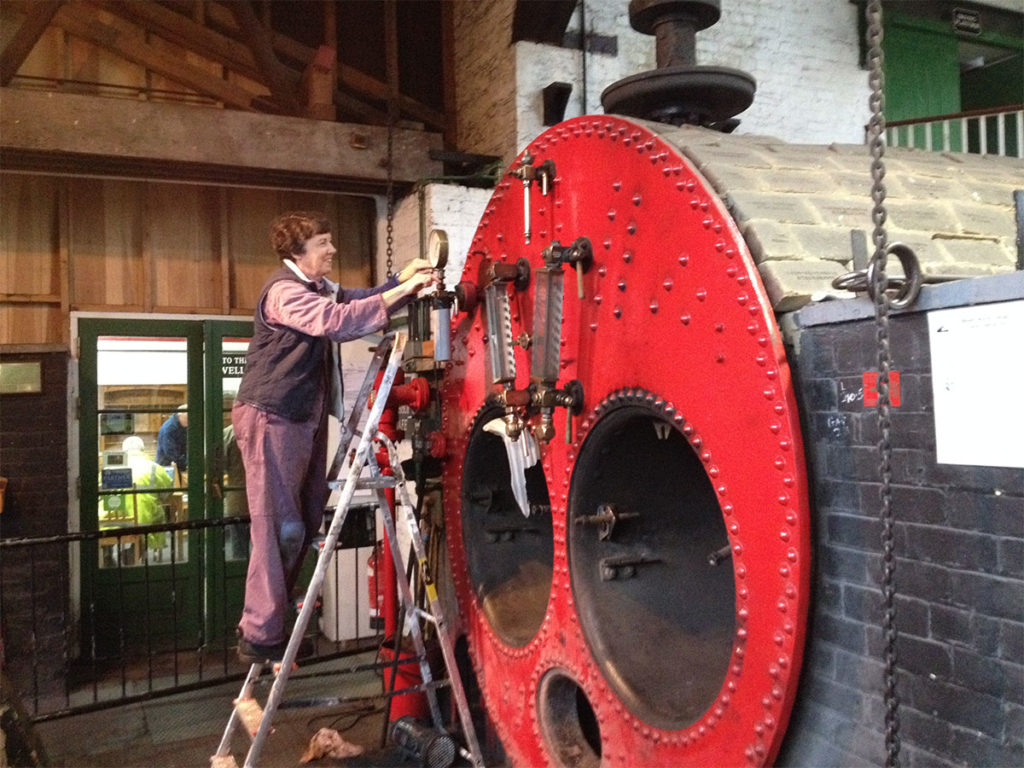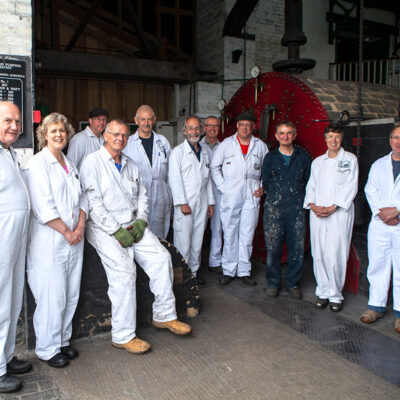Winter Maintenance
As would be expected with such an old structure, there is always a long list of maintenance jobs needing to be done. Some of these jobs can be done whilst the general public have access to the building, others can only be safely carried out when the station is closed. During each summer, a work programme for the coming winter closure is drawn up. The tasks usually cover every aspect of the facility. Examples are repair/refurbishment of the buildings and services, improvements to public facilities and examination and rectification work of major internal engine components.
Before any of this work can be carried out, a routine process of winterisation must be completed to examine the condition of the engines and plan for any deterioration that may have occurred during the summer season and to protect the plant from the harmful effects of winter frost and dampness. In addition, the boiler must be dismantled and cleaned out to enable it to be given its annual safety inspection. Once the boiler has been inspected, it, too, is protected against frost and corrosion for the winter. The work described takes several weeks to complete and often results in further jobs being added to the maintenance programme. The following paragraphs describe this winterisation process in more detail.
Start of Winter
Boiler
The fire doors and fire bars are removed, the water is drained, and the mud hole and man hole doors are removed. The water spaces are then cleaned out by pressure washing and dried by the use of warm air. This work is done by Crofton volunteers. Next, external contractors are brought in to remove the soot from the boiler sides and flue spaces. The boiler inspector then carries out a detailed visual inspection of its condition, both internally and externally. Once this has been done, and a clean bill of health given, trays of dehydrated lime are placed in the water spaces and the boiler is sealed so that it remains dry internally throughout the winter.
Engines and Ancillaries
The water is drained from the condenser tanks and they are washed out with a pressure washer to remove sludge. The circulating and air pump non-return valves are opened up and examined for condition and proper operation and the ducting and pipework are inspected for satisfactory condition. The non-return valves in the boiler feed pumps are dismantled and checked for satisfactory condition, and the seats ground-in if necessary. All operating linkages are examined for wear and proper function. All bright metal surfaces of the main and auxiliary engines are treated with a corrosion inhibiting grease. Whilst this process is carried out, the components are examined for wear and/or damage.

End of Winter
Boiler
The boiler fire bars and furnace fronts are replaced. The trays of lime are removed, and the man hole and mud hole doors are replaced using new gaskets. The blow-down valve is dismantled, cleaned, ground in, and reassembled with new joints. The boiler is then filled with water to its operating level and water conditioning treatments are added. This first fill takes over two days as there are some 1800 litres (4000 gallons/18 tons) of water involved. A couple of weeks before the station reopens to the public, the boiler is steamed privately for the boiler inspector to observe satisfactory operation of the safety valve. This first raising of steam is done gradually over a period of 48 hours to minimise stress on the boiler shell.
Engines and Ancillaries
The valves in the condenser tanks are closed up with new gaskets if necessary, and the tanks are filled with water (this takes approximately 2 days for each tank because of the volume of water involved) and the boiler feed pump valves are reassembled. The grease is removed from the bright metal surfaces and any corrosion removed. Paint work is given a wipe down and repaired as necessary. All operating linkages are rechecked for proper function.

Once the boiler safety valve test has been completed, the engines are run up and any snags that have developed over the winter are dealt with.
Additional Periodic Boiler Work
Additional Periodic Boiler Work – Every year, in addition to the work described above, the little firewalls behind the fire bars inside the boiler furnaces are removed to enable this area to be inspected. At the end of winter, these have to be rebuilt before the fire bars are put back in.
Every 10 years, the insulating brickwork over the top of the boiler has to be removed to enable the boiler inspector to examine the exterior of the boiler. The amount of work involved in removal and replacement of the brick work for the boiler’s 10-year inspection usually precludes any other major work being done during that particular winter period.












